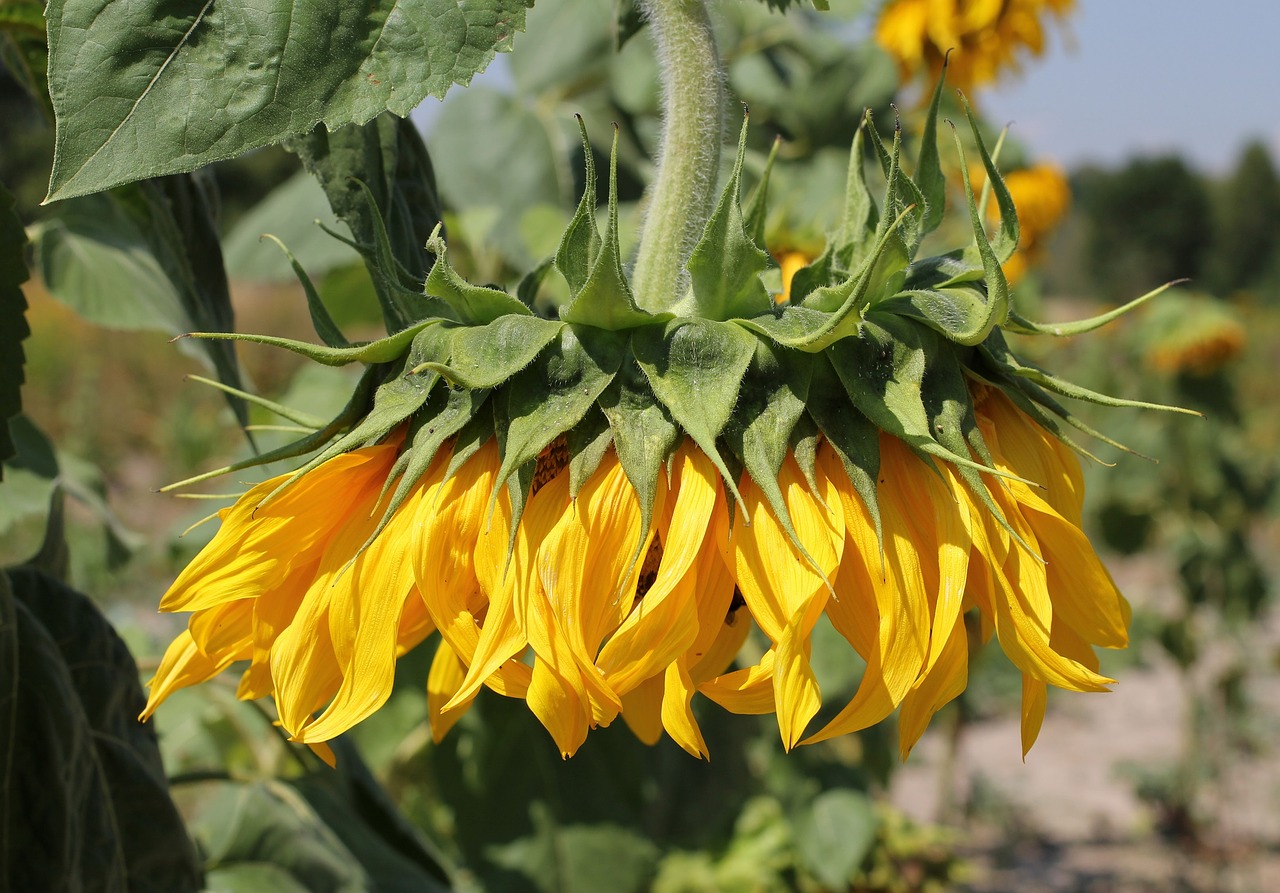Plants wilt in most situations because they’ve simply run out of available water. Water is constantly moving in a plant from the soil, into the roots up through the stems and out to the leaves.
Once water enters the leaves, most of the water (typically 95% or more) escapes through the leaves into the air through tiny holes in the leaves called stomata. This process is called transpiration and is somewhat similar to how we as people sweat.
Are your plants wilting in the heat?
The majority of plants we choose to put in our yards and gardens are not accustomed or well-adapted to extreme high temperatures. Without much-needed shade in the afternoon cast by buildings or established trees, these plants may fade, wilt or, in the worst case, die from the extreme heat.
Even when soil conditions are ideal, which includes adequate moisture, many plants will wilt or droop in the heat. The wilting process is caused by plants losing moisture through their leaves. This is a natural process called transpiration. Transpiration is the movement of water from the roots throughout the entire plant and its leaves. The plant is losing water faster than it is absorbing it. When this happens, the plant loses its turgidity and begins to wilt.
Low soil moisture is often the reason this happens but other factors play a role. When temperatures are high and it is warm or hot, the plant loses more water through transpiration causing the plant to wilt if the water needs are higher than what is available.
Also, if the air is especially dry, wilting can occur quickly. Plants with higher water needs will wilt much faster than plants with low water needs like cacti and other succulents. For example, Spathiphyllum (Peace Lily) are notorious for wilting very easily but will perk back up quickly when watered.
Occasionally, vascular fungal diseases will clog the xylem tissue and cause wilting. Verticillium wilt is a common example and is often seen in tomatoes and trees.
Also, extreme over-watering of indoor plants can also cause a plant to wilt in some situations, when soil is completely saturated with water and are devoid of any oxygen, roots fail and are unable to absorb water effectively.
How to detect the cause?
For gardeners, the challenge is to find out if the wilting is caused by water stress or heat stress. A way to do this is to check the soil moisture before adding more water. Plants that have adequate moisture may wilt in the daytime temperatures and revive without assistance as the temperatures drop in the evening and the plant’s system balances out. If you were to start adding extra water to an already moist area, you may end up drowning your plants, starving their roots for oxygen and causing them to die.
In the mornings, take a small trowel with you, and check the soil’s moisture near your plants. The heat and wind will pull moisture out of the top 1 inch of soil within hours. Because of this, you should check 2 to 3 inches deep near plants before deciding to give them any more water. If you see moisture at this depth, you may not need to provide extra water.
How to keep plants from wilting
Very few plants need daily watering if they are encouraged to grow a large root system in which the majority of the roots are found at least 6 inches below the soil line. To encourage good roots systems, water plants deeply and widely. For already established plants, water deeply and less frequently. Modify your irrigation and check it regularly.
Improve the soil conditions of your plants when you plant them by incorporating compost into the top 6 inches of soil. If you have an existing landscape, add compost as a mulch around your plants. Compost will not only keep the soil temperatures cooler for the plants, but it will also feed the soil which will ultimately feed your plants.
For outdoor plants and trees, it’s important to remember that they continue to consume water during winter so it’s important to thoroughly water these plants in fall before winter sets in and the ground freezes, particularly for evergreens and newly installed plants.
Source:

